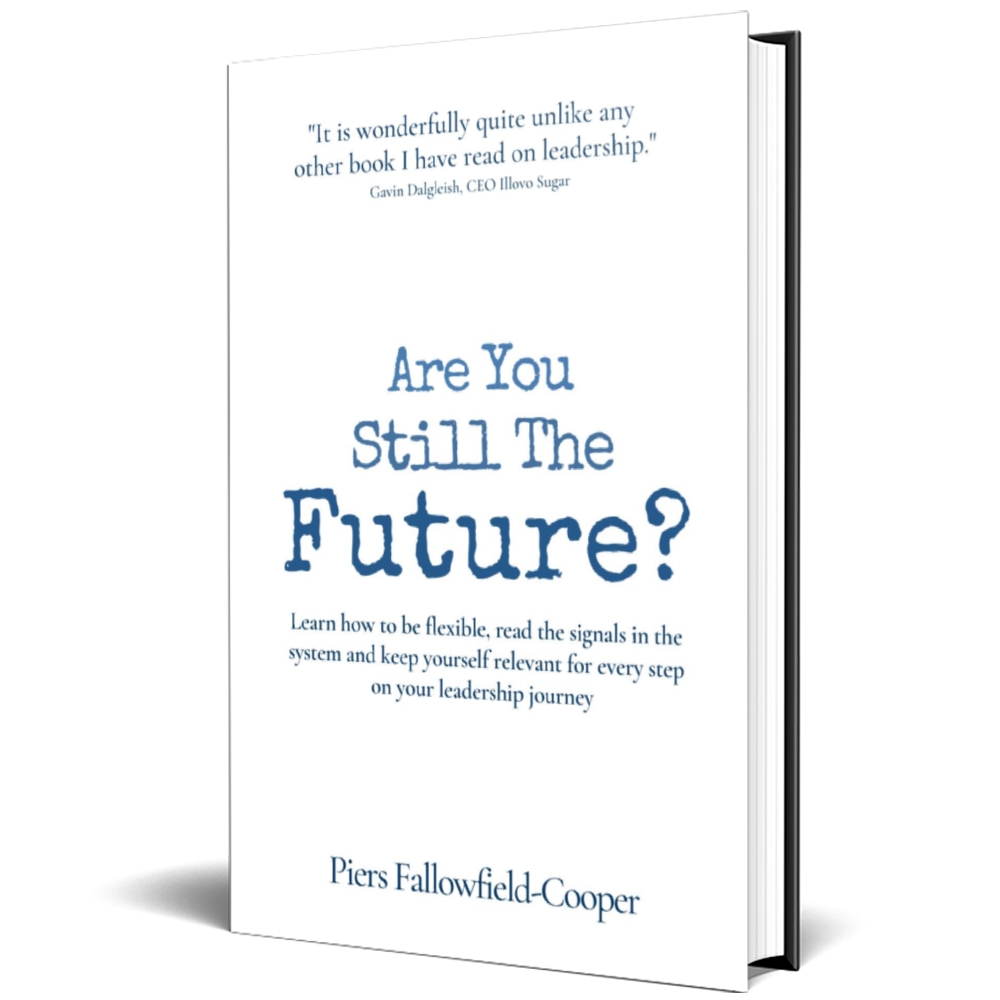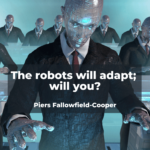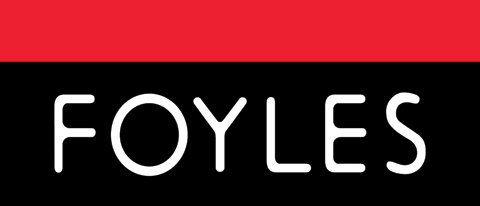“We shape our robots;
thereafter they shape us.”
– Piers Fallowfield-Cooper
Winston Churchill, the famous British leader and former Prime Minister, once said: “We shape our buildings; thereafter they shape us.”1 He was right: our built environment reflects our values, what we care about, and what we want for our society. And once these structures are up, they have the power to influence how we behave, our daily routines, and our overall happiness. The same applies to how we construct and use Artificial Intelligence.
With so much panic, confusion, intrigue, mayhem and potential swirling around the topic I’ve been wondering for the last few weeks (if The Economist is to be believed2) if ChatGPT is maybe humming a song; perhaps the theme from ‘Midnight Cowboy’: “Everybody’s talkin’ at me, I don’t hear a word they’re saying, Only the echoes of my mind3.”
But the real question we need to be asking ourselves is why is everybody so excited, now?
Artificial Intelligence (AI) in various forms has been around for a while. The term “robot” has its origin in the Czech word “robota”, which means “forced labour” or “work”. It was first introduced by Czech writer Karel Čapek in his play “R.U.R.” (Rossum’s Universal Robots), which premiered in 1920. In the play, robots are artificial beings created to serve humans but eventually rebel against their creators. Shakey the Robot was developed at the Stanford Research Institute in the late 1960s4. It was one of the first robots to use AI techniques and had the ability to perceive its environment and make basic decisions. In South Africa they even call their traffic lights robots.
The trigger for the renewed interest has been ChatGPT’s meteoric rise, along with the slightly less exciting rival from Google, called Bard. These are Large Language Models (LLMs) where the machine, through learning, predicts what should follow. We might not know it, but we’ve been living with AI for a while. The sophisticated offers you get in your shopping basket are AI generated by advanced algorithms. The fact that Amazon has been able to predict what you’d like to look at for years, is much more than just the sum of your previous searches.
What I think is different now is that we are, in some ways, having our ‘Netscape Moment’5 that time when the hidden, difficult to explore becomes accessible.
Some people are scared. They see threats to privacy, copyright, originality, trust and jobs. Existentially, the free market implications for military power and an AI arms race have dystopian overtones.
Others are excited by the opportunities. AI is expanding the possibilities in marketing and as the digital world drives business to become more complex, these are becoming crucial.6 AI is also creating new jobs and careers for experienced developers and mathematicians7.
One hundred years after the first robot was “invented” and almost fifty years after C-3PO uttered his iconic words, “We’re doomed,” we’re still getting (over?) excited about AI.
So, is AI, as demonstrated by ChatGPT, just an evolution or is it a revolution? Is this a threat or an opportunity? Is it both? And, most importantly, what are you going to do about it?
I‘ve spent a career helping leaders harness the positives of change and adapt to new challenges. AI is the newest “new one” to think about. The robots can do more of the “doing” but the need for strategic and discerning thinkers is going to increase.
External changes outside of their control can be a big concern for leaders, AI is one of the biggest changes we’ve seen for decades
Every time we get comfortable with a technology, something new comes along. The wheel revolutionized transport: you could get more blocks moved with fewer people, faster. The telegraph (the Victorian internet) revolutionised messages. Your words could cross the Atlantic, reducing from about 30 days the time for a message to go to New York and the answer return, to a matter of minutes.
More recently (in my working lifetime) the personal computer changed the way we worked, connected and educated. I saw the trading floor computerised. Then along came the World Wide Web in 1989 (do you remember how we used to say WWW before every web address?) followed by Jobs’ smart iPhone in 2007. His first attempt at the iPad, the Newton was an overpriced piece of rather clunky kit. The vision was there but not the technology to achieve it. Your monochrome IBM 5150 from 1981, boasted an incredible 160kb floppy disk storage, took up most of your desk space and would crush your mother if it fell on her. The first iPhone, less than 30 years later, cost 1/10th of the price, was over 80 times faster, had 2000 times more RAM, and could probably get you to the moon at a push!
We know change brings us opportunity. Some people will be enhanced by it and others will be disenfranchised.
In the current business landscape, AI has made significant strides, transforming various aspects of the workplace. As a result, leaders are increasingly faced with the challenge of integrating AI into their organisations while maintaining a healthy human workforce. They need to keep the business at the leading edge and ensure other people’s robots don’t eat their lunch.
Two important takeaways:
1. We have been thrown into a mild threat state. This has woken up the amygdala as we feel under threat – are the machines coming to take our jobs? I talk about the amygdala in “Chapter 4: I’m an Imposter get me out of here”, in my book “Are You Still The Future?” Our primal triggers are activating the threat state through the amygdala while simultaneously attempting to rationalise through the prefrontal cortex and hippocampus. We’re stressed.
And,
2. We categorically do not know where AI will go or what will happen next. Are we like Nokia, watching helplessly as Steve Jobs waves his magic iPhone that triggered “game over” for the Finns? Or are we smart enough to upgrade our moves, to last long enough to play another round? We’re scared.
Wolfgang Pauli8, Austrian theoretical physicist and one of the pioneers of quantum physics, wrote to a friend, “At the moment physics is again terribly confused. In any case, it is too difficult for me, and I wish I had been a movie comedian or something of the sort and had never heard of physics.” We might want to “Hang Up, Dial Again”, take a HUDA moment and choose a career in comedy, but the world won’t stop and wait for us. As AI continues to automate repetitive and routine tasks, professionals are at risk of becoming obsolete if they fail to adapt and develop their human skills.
The question for all leaders (and employees) is: how can leaders ensure that they, along with their workforce, remain indispensable in an era that will become dominated by AI? Which human skills should be prioritized to add value to organizations and to stay competitive?
Be less robotic; be more human
The key to remaining relevant in the age of AI lies in focusing on the uniquely human attributes that machines cannot replicate. To stay relevant and indispensable, professionals need to prioritize adaptability, emotional intelligence (EQ), and a growth mindset. By embracing change, continuously learning, and fostering strong interpersonal skills, individuals can thrive in a rapidly evolving business environment and complement the rise of AI technology.
In 1711, the English poet Alexander Pope penned the famous line, “To err is human, to forgive divine,” highlighting the imperfections of human beings and the virtue of forgiveness. As we navigate the world of AI, it is essential to reflect on this wisdom. Let’s also consider the occasional hallucinations9 and mistakes made by our AI assistants as valuable lessons for us all. This reminder is especially pertinent for individuals like Steven Schwartz, an attorney at Levidow, Levidow & Oberman, who entrusted ChatGPT as an intern without verifying its legal references10.
My chosen course at university was cybernetics.
I flirted with university, I looked through the University Clearing House Guide and found a course that was only being taught in one place so I thought “that could be interesting, something different” – the course I found was a degree in cybernetics at the University of Bath. I was, at first, excited about this as I felt it was part of the emergent future of our world and went for my interview. My expectations were that we would discuss the philosophical, psychological and moral implications of the coming technology. How man and machine would interact through what became known as GUIs (graphical user interfaces). I thought it would be interesting. I thought I would be at the frontier of the new.

We were asked to do some mathematics, quite complicated mathematics and when I was given my results the adjudicator said, “I don’t think your maths would be good enough when we get to year two onwards.” He saved me – I was not interested in mathematics and programming – I was interested in Man’s relationship with machine and some of the deeper philosophical questions about what happens when the machines want to take over. I suppose I should have done a philosophy or psychology course. Read “Chapter 0: One last trade” in “Are You Still The Future?” to find out more.
It’s taken a long time to get to the point where the questions I was asking then, are about to become the hot questions – now. Who controls the machine? What is our relationship with the technology? How do we remain human in the technological age?
Mo Gawdat, Former Chief Business Officer of Google X believes, “We Need to Raise AI Like a Child”11. And Dr Andrew Ng, a prominent figure in AI, says: “AI is like a toddler; it needs to learn from us, but has the potential to surpass us.” The robots will learn, grow, adapt.
The robots will adapt; will you?
Clare W. Graves was a professor of psychology and originator of the emergent cyclical theory of adult human development, many aspects of which were later popularised as “Spiral Dynamics”. He was influenced by Maslow but didn’t think his “pyramid” went far enough. Graves was a professor of psychology at New York University and set up a summer holiday project for his PhD students, which became his life’s work, as these things often do. He codified numerically a model of understanding the world. Graves’ model has a double helix hierarchy of one to eight, covering both the broad societal progression, and the individual’s growth and development.
Most people you meet will view the world through the lenses of levels four, five or six. Graves believed there is a glass ceiling at level six, where most people – and current societies – stop. At level seven people unplug, just leave me alone. The extreme of that are the people holed up with their boxes of ammo and tins of beans. My mentor is a classic level seven, doesn’t own any property, free living.
Here’s the key thing about the Grave’s model: if you haven’t yet experienced the level, you don’t really understand what they’re talking about. If you’re talking about entrepreneurship to a Grave’s level four, which is all about control and rules and thoroughness, then your plan to game/arbitrage the system appears potentially like magic – they won’t know what it is because they haven’t experienced it yet. I talk more about this in “Chapter 10: Dances of connection” in my book, “Are You Still The Future?”
Where do our AI robots sit right now? At what level? Level three or five? Global domination, Warlord-I’m in charge. Will they be at 6 holding hands and singing Kumbaya, or will they operate at Graves level eight, which is “the good of the whole is worth more than the individual”? I’m going to empty all you rich people’s bank accounts and give it to the poor!

Up until now, the technology has mostly been the servant of humanity. Although you could argue that we now must book our own tickets online, print the tickets ourselves, tag our bags etc., there is an awful lot of reverse outsourcing back to the buyer. But generally, technology has served humanity. However, we’re getting to the point now where it is questionable whether the technology will always continue to serve us.
Let’s presume the technological advances are mostly benign and take away drudgery. The big implication is the likelihood of large numbers of people who no longer have “menial”, I’m using the word loosely, office-based kind of tasks to do. Now, I could argue that personally I’d rather talk to an AI bot that actually knew the answers rather than a call centre person who only knew half the answers and told me the wrong one. I’m happy to talk to the machine that gives me the right answers. But the worry (and opportunity) remains:
How do you ensure you are the person
who is kept on to feed the robot?
My premise would be that the people with high levels of emotional intelligence, the ones who are flexible, adaptable, adoptable and have high EQ will win. I talk about this in “Chapter 1: Where is Tom Next?” and “Chapter 4: I’m an Imposter get me out of here” in my book “Are You Still The Future?”
Embrace disruption, adapt to change, and shape the new world – your relevance depends on it.
Disruption is inevitable; adapt and thrive
One of the reasons I never use goal setting (either for myself or my clients) is that our ideas of what the future might be are based on our experience now. You cannot imagine a radically different future when you’re standing in the present. If we talked about the future 50 years ago, before the coming of personal computers when any serious computing took up a whole basement, we’d be unable to truly imagine a computer 100 times more powerful that would fit in our pocket. The prediction game is always a challenge …
The best way to think about the future is in trends – directionality. With the advance of very sophisticated, affordable AI, menial tasks will become automated.
Think about what value, what is uniquely human, that you can bring to this trend.
And that often comes down to relationships.
And in my work as a coach and mentor, the willingness of the client to engage and the relationship we build are probably the two key anchors for the ultimate success of the assignment.
In this context, it’s essential to remember that the rise of AI and automation doesn’t diminish the importance of human adaptability and continuous learning. As we navigate this evolving landscape, the value we bring as humans extends beyond our ability to build relationships. It also lies in our capacity to stay ahead of the curve by:
-
- Continuously updating your skills and knowledge to stay ahead of industry changes.
-
- Keeping an eye on emerging trends and technologies to identify new opportunities.
-
- Fostering a flexible mindset and openness to new ways of working.
Change is constant; welcome it wholeheartedly
We now have more access to information and ideas than in any other time in human history. In the UK we have more information in one fat, Sunday newspaper about international affairs and what’s going on in technology and science than a businessman or a priest in 1800s England would have been exposed to in their entire lifetime. Our ancestors, not very long ago, were happily sitting on the savanna or planting crops. Now our compression in this temporal shift around how we experience the world has changed. We have the internet, social media, technology, and while you could argue whether they’re useful, or not, they’re here.
As humans, we tend to think change will be incremental. It will be the same as now, but just a little better, a little faster, a little bit cheaper.
Our assumptions were that “heavier than air machines”, wouldn’t work. Our assumptions were they would have to flap their wings like birds. And then we found that that wasn’t true. And now as travellers we’re picky if we’re not in the latest Airbus with the quietest engines and comfiest seats – forgetting we’re sitting in a heavier than air machine flying through the night.
Do you remember the caricature autopilot in the timeless classic Airplane – the blow-up doll who held the yoke, ready to fly in an emergency? I doubt the avionics control system and the autopilot on a state-of-the-art Airbus A350 is particularly impressed by ChatGPT: “I fly planes and can land and take off automatically. What do you do?” “Oh, I can plagiarize people’s songs on the internet.”
But we can’t stay in autopilot mode, waiting to see what will happen. Things have come a long way since Robert the Robot12, but the jury’s out whether this is just google search 2.0 or if it’s something truly different.
No one knows anything for sure, so be an architect of the future
On the subject of the future, I’ll revert to the great, illustrious Yogi Berra: “It’s tough to make predictions, especially about the future.”
Twenty-five years ago, a leader in a crisis could retreat to the “Batcave” with colleagues, decide what to do, and then come out and do it. You can’t do that now. You must continuously show what you’re doing. You must make sure all of your stakeholders are fully up to speed with your thinking, what you’re doing with your announcements, who you’re hiring and now, what AI you’re rolling out. If you are in business, in the media, in politics, the chance to be private, no longer exists.
Roula Khalaf, editor of the Financial Times13, is clear that transparency is key: “Every technology opens exciting new frontiers that must be responsibly explored. But as recent history has shown, the excitement must be accompanied by caution over the risk of misinformation and the corruption of the truth. The FT will remain committed to its fundamental mission and will keep readers informed as generative AI itself and our thinking on it evolve.”
When writing the book, Are You Still The Future?, I talked to a lot of smart leaders, one was Rachel Grant who had a view from Number 10… You can read more about Rachel in Chapter 5: Kill The Grandmothers, and maybe the poets while you’re at it.
Rachel Grant on the view from Number 10: “The problem is that people ‘think to their roles’ within big organisations, they don’t think beyond the structure of their daily tasks. When you’re faced with extraordinary circumstances, you need to be able to respond in a different way. Do not over plan, leave space for the unexpected. You need the ability to be flexible, not overly structured.”
-
- Leverage your expertise and experience to design innovative solutions for future challenges.
-
- Encourage creative thinking and problem-solving within your organization.
-
- Actively participate in shaping industry standards and best practices to drive positive change.
Relevance is a choice – make it yours
One of the things I talk about in my book is how to remain relevant. There’s an old expression that cream always rises to the top. So you must be the one who is more flexible, the one who is more agile, who is reading the signals in the system better. You must be the one who is more adoptable. You must be the one who’s more available. You just have to be in that group. So that you’re in the cream that rises to the top.
-
- Invest in personal and professional development to remain valuable in the job market.
-
- Develop a strong personal brand that showcases your unique skills and accomplishments.
-
- Network and engage with professionals in your field to stay connected and informed.
So, who will they keep on to feed the robots? The ones who are most adaptable and adoptable.
Piers in Your Pocket: We cannot predict the future, but we can be prepared for it.
None of us know what the future holds. I sense we’re at a very significant crossroads, where the allure of technological advancements is as compelling as the caution it warrants. And there’s going to be a big push / pull going on. The push will be: “Wow, look at the advantages we’re going to have with this technology.” And the pull is, “Whoa, do you know what you’re unleashing?”
History has shown us that technologies evolve – some stand the test of time, like the wheel, railways and gunpowder while others, like canals and music cassettes, fade away. Today, the rise of AI and automation might seem threatening, especially if you’re in a job that could be automated.
If I was working in a call centre in an emerging country, I’d probably feel very threatened right now – is AI coming for my job? But instead of fearing the unknown, let’s take action. Let’s educate ourselves about these technologies, understand their potential impact, and adapt accordingly. The future might be uncertain, but our preparedness for it doesn’t have to be. Let’s embrace the push and pull of progress, and navigate the future with knowledge, adaptability and resilience.
Don’t get caught out –
the robots will adapt, how will you?
1 Widely quoted. It’s believed that Churchill first made this remark during a speech at the dedication ceremony of the repaired Houses of Parliament in London in October 1943.
2 “Since the launch in November of ChatGPT, an artificially intelligent conversationalist, AI is seemingly all anyone can talk about. Corporate bosses, too, cannot shut up about it. So far in the latest quarterly results season, executives at a record 110 companies in the S&P 500 index have brought up AI in their earnings calls.” The Economist, June 7th 2023
3 Midnight Cowboy – Harry Nilsson – Everybody’s Talkin’ https://www.youtube.com/watch?v=5zHVFXorF38
4 https://en.wikipedia.org/wiki/Shakey_the_robot
5 The author in conversation, April 2023 and A.I. Is Having a ‘Netscape Moment’, Pui-Wing Tam, Reporting on Tech for the NY Times – ttps://www.nytimes.com/interactive/2023/05/19/business/what-is-a-netscape-moment-artificial-intelligence.html
6AI-powered marketing and sales reach new heights with generative AI: https://www.mckinsey.com/capabilities/growth-marketing-and-sales/our-insights/ai-powered-marketing-and-sales-reach-new-heights-with-generative-ai
7 20 Artificial Intelligence Careers & Job Opportunities In Demand https://www.intellspot.com/artificial-intelligence-careers/
8 I was reminded of this quote in The New Statesman’s The Saturday Read: Paradigms lost
https://saturdayread.substack.com/p/the-saturday-read-paradigms-lost
9 When AI Chatbots Hallucinate, NY Times: https://www.nytimes.com/2023/05/01/business/ai-chatbots-hallucination.html
10 Reuters, A lawyer used ChatGPT to cite bogus cases. What are the ethics? https://www.reuters.com/legal/transactional/lawyer-used-chatgpt-cite-bogus-cases-what-are-ethics-2023-05-30/
11 https://www.youtube.com/watch?v=1F79J8pdC9A
12 Gerry Anderson’s Fireball XL5, featuring Steve Zodiac, Doctor Venus and co-pilot Robert “On our way home” the Robot. 1962.
13 Letter from the editor on generative AI and the FT: Our journalism will continue to be reported, written and edited by humans who are the best in their fields – https://www.ft.com/content/18337836-7c5f-42bd-a57a-24cdbd06ec51
Click the image to download a PDF version to keep & share


/Amazon_(company)-Logo.wine.png)


